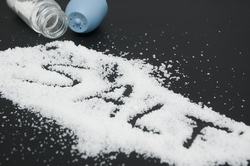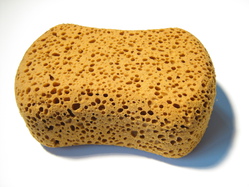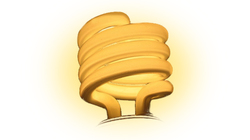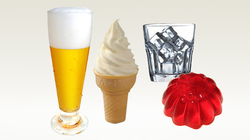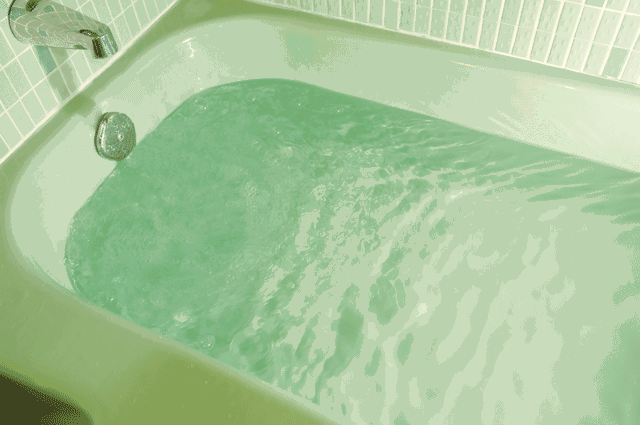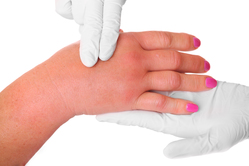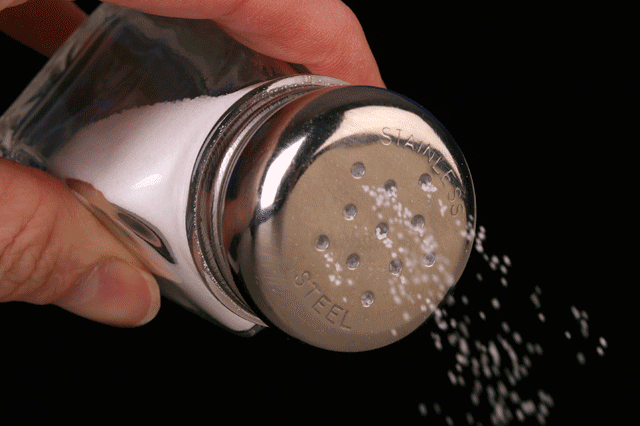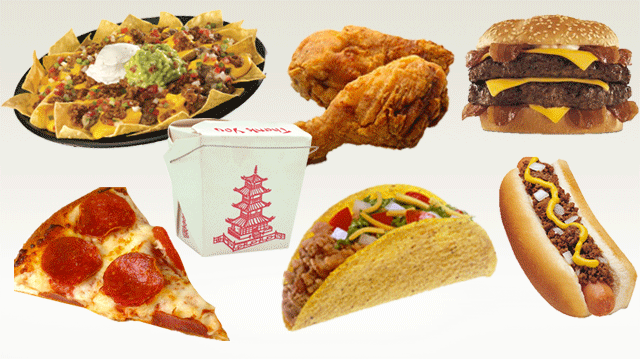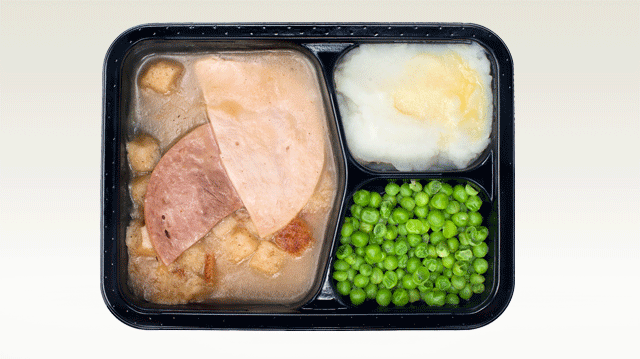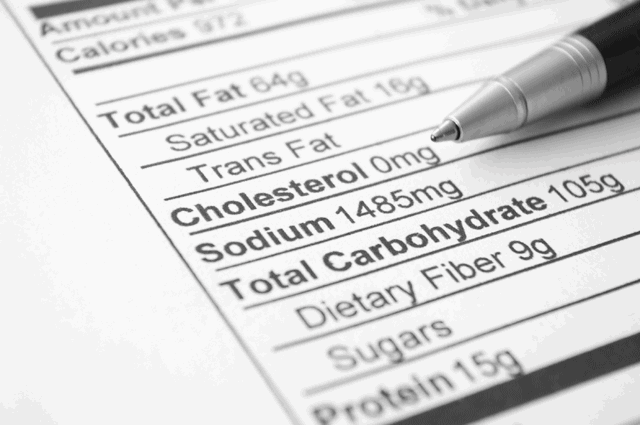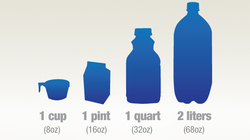Sodium is an Electrolyte
In your blood, sodium is an electrolyte. It helps you move your muscles, helps your brain work as it should, and controls your blood pressure.
Fluids are Liquid at Room Temperature
You know that fluids are liquids you can drink. But some foods are also fluids if they have a lot of water in them. Foods like soups and stews, ice cream, and gelatin “count” as fluids. Ice cubes count. Even watermelon—which doesn’t melt but is still mostly water—is a “fluid.” A trick some people use is to eat soup, stew, or breakfast cereal with a fork instead of a spoon. That way, you get the solid part, but not the fluid.
If you have a fluid limit, your care team will tell you how much fluid you can have each day. Your dietitian will help you figure out how to follow your limit.
Water and Salt Can Build Up in Your Body
Kidneys that don’t work well don’t remove all of the excess water and salt from the body. Think of your body as a bathtub. When your kidneys work well, you fill up the “tub” by drinking—and then the water and salt go down the drain. But when your kidneys don’t work well, water and salt stay in the “tub” and only drain out slowly. If your kidneys fail, the water and salt don’t drain out at all, and you need treatment to live.
You CAN have a good life even if your kidneys fail. Some people have lived for decades with kidney transplants or one of the many ways to do dialysis. To learn more about treatments for kidney failure, visit the Treatment Options room.
Swelling in the Hands, Feet, and Face
Excess water and salt can build up in the hands, feet, or face (often under the eyes). This problem is most common in kidney diseases that cause protein to leak out into the urine (called proteinuria). Cutting back on salt in your diet can help because salt holds water in your body.
Medications may help, too. Diuretics (water pills) prescribed by a doctor can help your body get rid of some excess water and salt (as long as your kidneys are working). Blood pressure pills called ACE-inhibitors or ARBs may help slow the types of kidney problems that cause swelling.
To learn more about medications and chronic kidney disease, visit the Pharmacy.
Put Away the Salt Shaker
If you are one of the many people who are salt sensitive, eating less salt, or sodium, can help you bring down your blood pressure. Here are some things you can do to cut down on the salt you eat:
- Take the salt shaker off the table.
- When you cook, cut the salt in half.
- Avoid salt substitutes. They may be high in potassium, which can harm you if your kidneys don’t work well.
- Use herbs and spices to add flavor to your food. There are lots of low sodium choices.
The American Heart Association says we should ALL limit sodium in our diets to 1,500 mg per day. Many people find that once they get used to eating less salt, food tastes better.
Avoid High-salt Fast Food
Did you know that many Americans eat fast food every day? A lot of fast food is very high in salt—along with fat, trans fats, starch, and just plain calories. It’s cheap and tasty, but it’s not good for you OR your kidneys. You can get a whole day’s worth of salt with just one menu item!
When you go out to eat, choose restaurants where they cook to order, and ask for your food with no added salt, MSG, salty sauces, or cheese on top. This may help you control your blood pressure.
When you want a snack, try:
- Fresh fruit or raw vegetables
- Baked chips
- Plain popcorn
- Low sodium pretzels
- Low fat, low sodium crackers
- Low fat, light yogurt and pudding
- Sugar free Jell-O or fruit-flavored popsicles
Avoid High-salt Processed Foods
About 3⁄4 of all salt in most people’s diets comes from processed foods. These foods come in a bag, box, bottle, or can. Not all processed foods are bad. But some have a lot of sodium. Soups and breads are some of the worst—look for low sodium versions. Some meats, like bacon, and deli meats like cold cuts and salami have too much salt to be good choices. Salty snack foods, like pretzels, crackers and potato chips have lots of salt, too.
Condiments like ketchup and soy sauce have a lot of salt. Boxed side dishes and “helper” foods usually have much too much salt, too. Many canned vegetables have lots of salt; fresh, frozen, or low-sodium vegetables are better choices.
Read Food Labels for Sodium
Does this look like a good food choice to protect your kidneys? The answer is NO! There is almost 1,500 mg of sodium in one serving of this food—a whole day’s worth!
Most foods have labels like this, to help you make good choices. Keep a close eye on serving sizes:
- A serving size may be in grams or ounces
- A food that comes in a bag could be two or three servings, not one
- If you eat more than one serving, you get more salt
For more information, read this Sodium Handout* from the National Kidney Disease Education Program.
* Links will take you outside of the Department of Veterans Affairs website. VA does not endorse and is not responsible for the content of the linked websites.
Watch Your Fluid Servings
If you have fluid limits, your care team and dietitian will talk with you about them. You’ll need to watch portion sizes—drinking cups can be very different! You may want to bring your own cup with you until you get a good feel for how many ounces there are in a serving. You can also keep track of fluid weight gains by weighing yourself each day.
Sodium & Fluid
- Eating too much sodium can:
Not scored Too much sodium (as salt) in your diet can raise your blood pressure.
- Which of these "counts" as a fluid?
Not scored Since ice cream melts at room temperature, it counts as a fluid.
- If you eat too much sodium, what is likely to happen to you?
Not scored Sodium attracts and holds fluid in your tissues, which can lead to swelling.
- Which of these foods have a lot of sodium?
Not scored Just one fast or processed food item may have a whole day’s worth of sodium. Read food labels or ask in fast food restaurants to learn sodium levels.
- Salt substitute is a good idea if you have a kidney problem and want to eat less salt:
Not scored When your kidneys don’t work well, they can’t remove as much potassium—which is the main ingredient in most salt substitutes.













